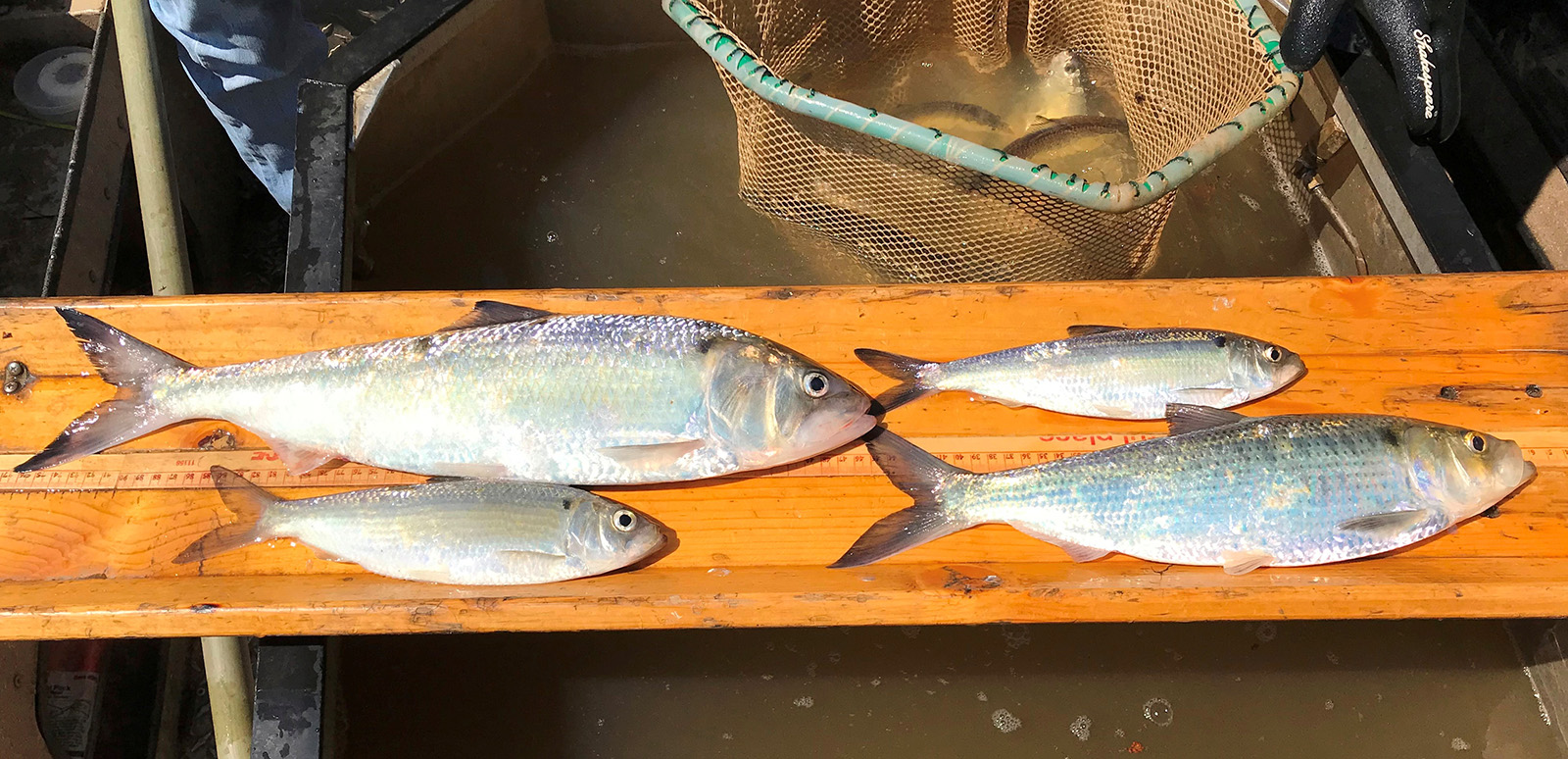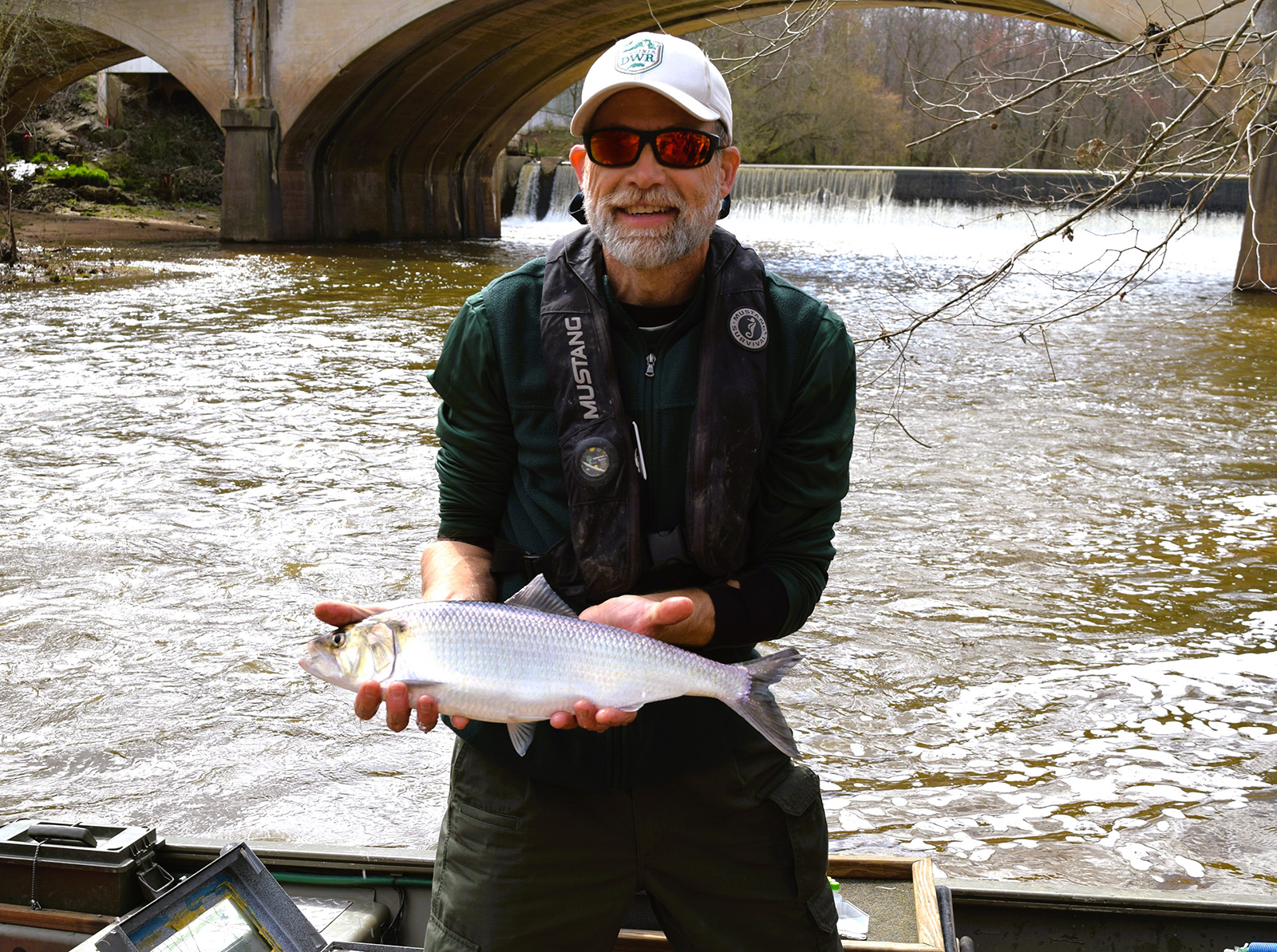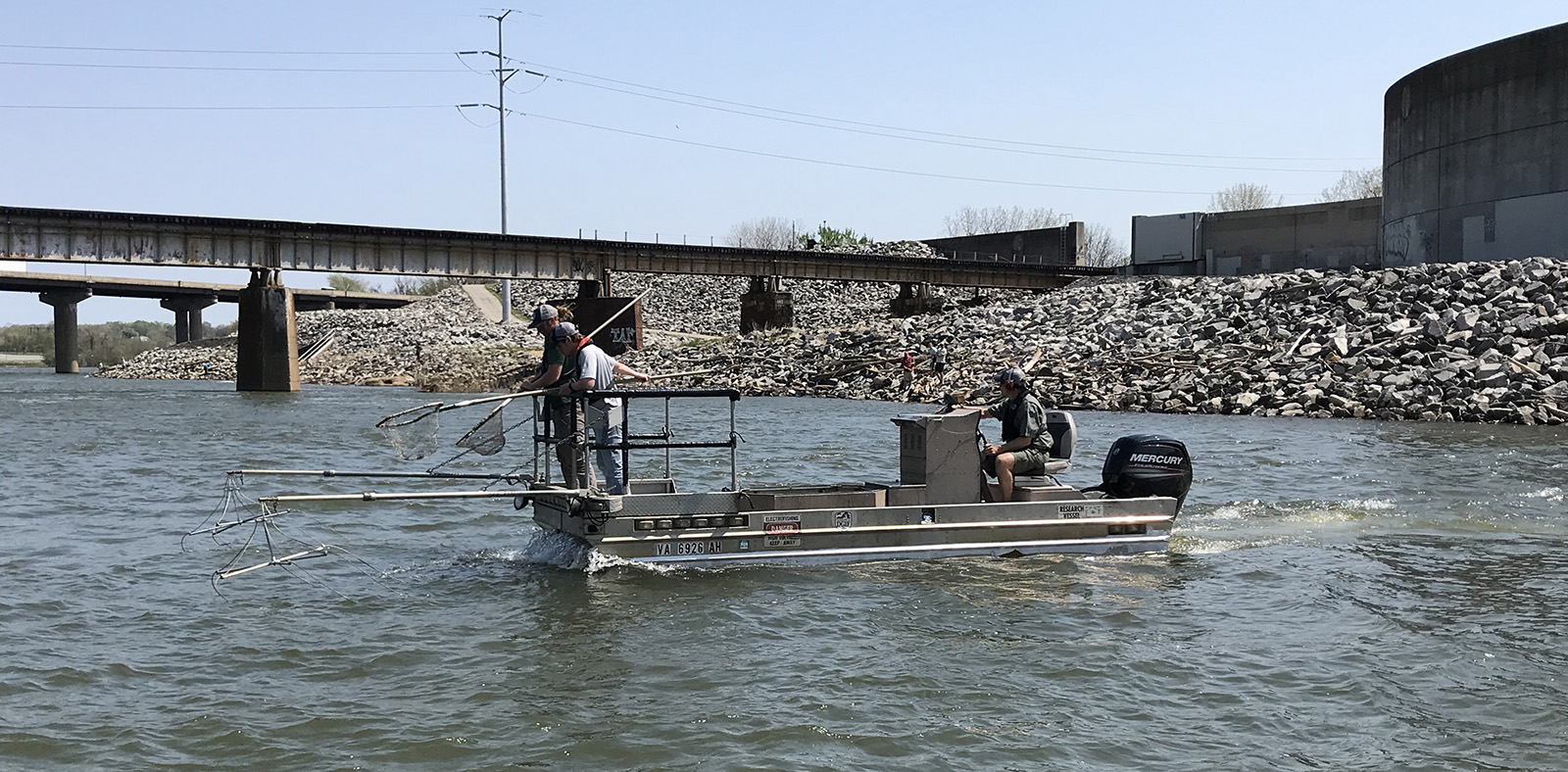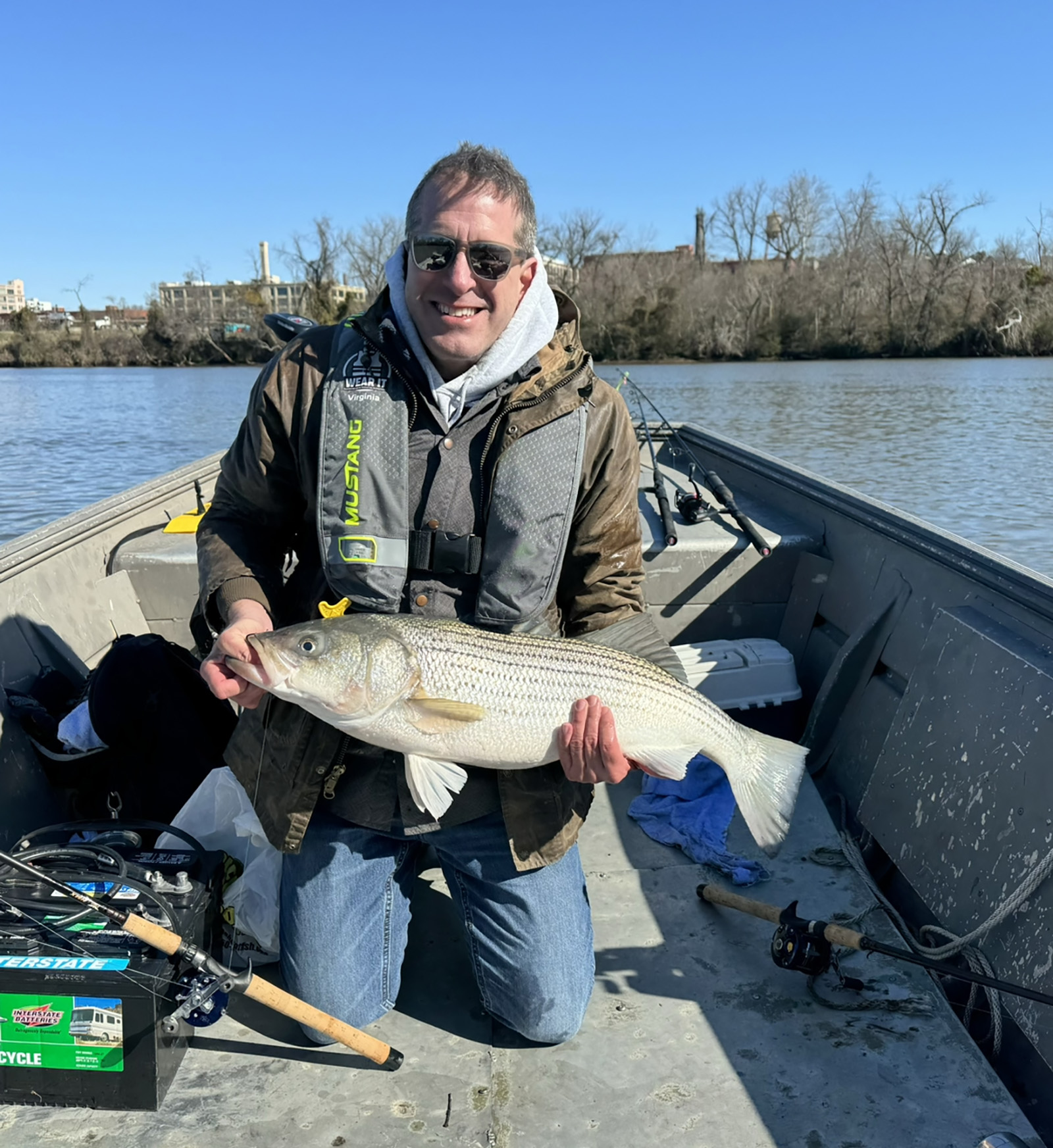Tis the Anadromous Fish Season!
By Alex McCrickard/DWR
Anglers living along the I-95 corridor can experience exceptional year-round fishing on Virginia’s tidal rivers. These rivers are popular destinations to chase largemouth bass, gar, bowfin, flathead catfish, blue catfish, and more, regardless of what month it is. However, every spring anglers are blessed with the seasonal arrival of ocean migrants that provide exceptional fishing opportunities and a welcomed diversity to any springtime fishing experience.
Anadromous Life History
In the world of fisheries, these ocean migrants are known as “anadromous” fish. Anadromous fish are species of fish that spend portions of their lives in both saltwater and freshwater. Anadromous fish are migratory, traveling long distances from the ocean to return to the freshwater rivers and streams where they were born to spawn. These fish travel hundreds—sometimes thousands—of miles to return to the rivers where their life began in order to create the next generation. To me, it’s one of the most fascinating journeys any animal on this planet makes.
The Chesapeake Bay and its tributaries are the home destination for many anadromous fish each spring. In Virginia, native species such as hickory shad, American shad, blueback herring, alewife, and striped bass make the journey from the Atlantic Ocean into the Chesapeake Bay and up into Virginia’s tidal tributaries to spawn. Many of these species will travel upriver in large numbers to spawn near the fall line where Virginia’s Piedmont transitions to the Coastal Plain. The morphology of our rivers change drastically at the fall line, where fast-flowing, rock-strewn runs, riffles, and rapids become slow-moving tidal rivers.

American shad (top left), blueback herring (top right), alewife (bottom left), hickory shad (bottom right) are all anadromous species. These were captured in the tidal Rappahannock River. Photo by Alan Weaver/DWR
It’s the diversity of habitat near the fall line area that draws anadromous fish in. For some of these species, the fall line provides plenty of places to forage. That—coupled with the spawning habitat nearby—makes an ideal scenario for these fish. Many will also travel well beyond the fall line, as they did historically, and find quality spawning and rearing habitat if there are no migration barriers.
Monitoring and Fish Passage
The Potomac River near Washington D.C., the Rappahannock River near Fredericksburg, and the James River near Richmond are a few of the destination areas where anadromous fish congregate each spring to fulfill their reproductive strategies. Alan Weaver, Virginia Department of Wildlife Resources (DWR) fish passage coordinator, has been tasked with monitoring the runs of these fish during his 30-year career.

Alan Weaver, fish passage coordinator at DWR, displays an American shad collected during a spring sampling event. Photo by Melinda Weaver
“To catch the early part of the run, every year in mid to late February we begin sampling several Virginia Chesapeake tributaries to monitor shad and herring populations and their distribution above fish passage projects (fishways and dam removals),” said Weaver. “We use primarily boat electrofishing on larger rivers just below the fall lines and also in non-tidal reaches upstream of the fall zones. Backpack electrofishing is used on smaller wadable streams.”

Alan Weaver, DWR fish passage coordinator, conducting an electrofishing survey on the James River in downtown Richmond.
Thermal cues are one of the triggers that kick off the migration of anadromous species. “Typically, alewife and hickory shad are found in late February once water temperature surpasses 46⁰F and run through April,” said Weaver. “The hickory shad peak spawning temperature is around 61⁰F. Blueback herring arrive in late March and run through May, with peak spawning occurring in the mid-60s. American shad activity generally peaks in mid-April through May, with 65⁰F being the prime spawning temperature. But they can be found in early March in some years,” said Weaver.
Additionally, striped bass will begin to show up once water temperatures stabilize in the mid 40⁰F range with spawning starting around 55⁰F. Weaver and his team utilize a metric of relative abundance known as a “catch per unit effort” which allows them to track interannual trends in the populations. “We also take length and weight measurements to monitor the relative health of the fish and sometimes we take fin clips to look at shad and herring genetics,” Weaver explained.

Bob Smet, DWR director of outreach, displays a striped bass he caught on a Virginia tidal tributary to the Chesapeake Bay. This fish was caught in early spring when water temperatures stabilized around 45 degrees F.
Weaver and his team have worked hard over the years to expand fish passage throughout Virginia. Installing the fishway at Boshers Dam on the James River, removing the Harvell Dam on the Appomattox, and removing Embrey Dam on the Rappahannock are just a few of many examples of some of the work DWR has been involved with to open up connectivity to historic spawning grounds for these fish. Despite these efforts and in addition to years of stocking, American shad populations have not seen the rebound that DWR had hoped to see over the years.
In addition to benefitting anadromous species, fish passage also plays a crucial role for another species in Virginia, the American eel. American eels are a catadromous species, which is the opposite reproductive strategy of an anadromous species. Adult eels live in freshwater but return to saltwater to spawn in the Sargasso Sea.
Recreational Opportunities
If you haven’t tried fishing for shad or striped bass, you may consider exploring one of Virginia’s tidal rivers this spring to see some of these migratory fish for yourself! The fishing has the potential to be fast and furious, especially when fishing for hickory shad if you can time it correctly. Shad darts and shad spoons fished close to the bottom are the ticket for anglers fishing with a spinning rod. Fly anglers can fish similar-colored shad flies with great success.
Anglers looking to target striped bass on Virginia’s tidal rivers should fish with lures and or flies that imitate herring and alewife. Swimbaits in the five- to six-inch range, jerkbaits, and topwater plugs work well. Clouser minnows, half-and-halfs, and other large streamer patterns work well for fly anglers fishing with a sink tip or sinking line. Make sure you are familiar with the current regulations and that you know how to properly identify the shad you catch. Additionally, when practicing catch and release, make sure you handle these fish with care by following our best practices for catch and release! As a reminder to all, below are the current spring 2024 regulations for these species in Virginia’s tidal rivers.
Anadromous Fish Regulations for Spring 2024 set by the Virginia Marine Resources Commission
American shad – There is currently a statewide moratorium on American shad, and all American shad must be released as possession is unlawful.
Hickory Shad – There are currently no regulations on hickory shad caught above and below the fall line in all coastal rivers of the Chesapeake Bay. There is no length limit, but a bag limit of 10 fish per day for hickory shad caught in the Meherrin River below Emporia Dam, Nottoway River, Blackwater River (Chowan Drainage), North Landing and Northwest rivers, and their tributaries, plus Back Bay.
Alewife & Blueback Herring – There is currently a statewide moratorium on both alewife and blueback herring and both of these species must be released as possession is unlawful.
Striped Bass – May 16 though June 15 inclusive, daily possession is one fish per person with a minimum size limit of 20 inches and a maximum size limit of 28 inches.
